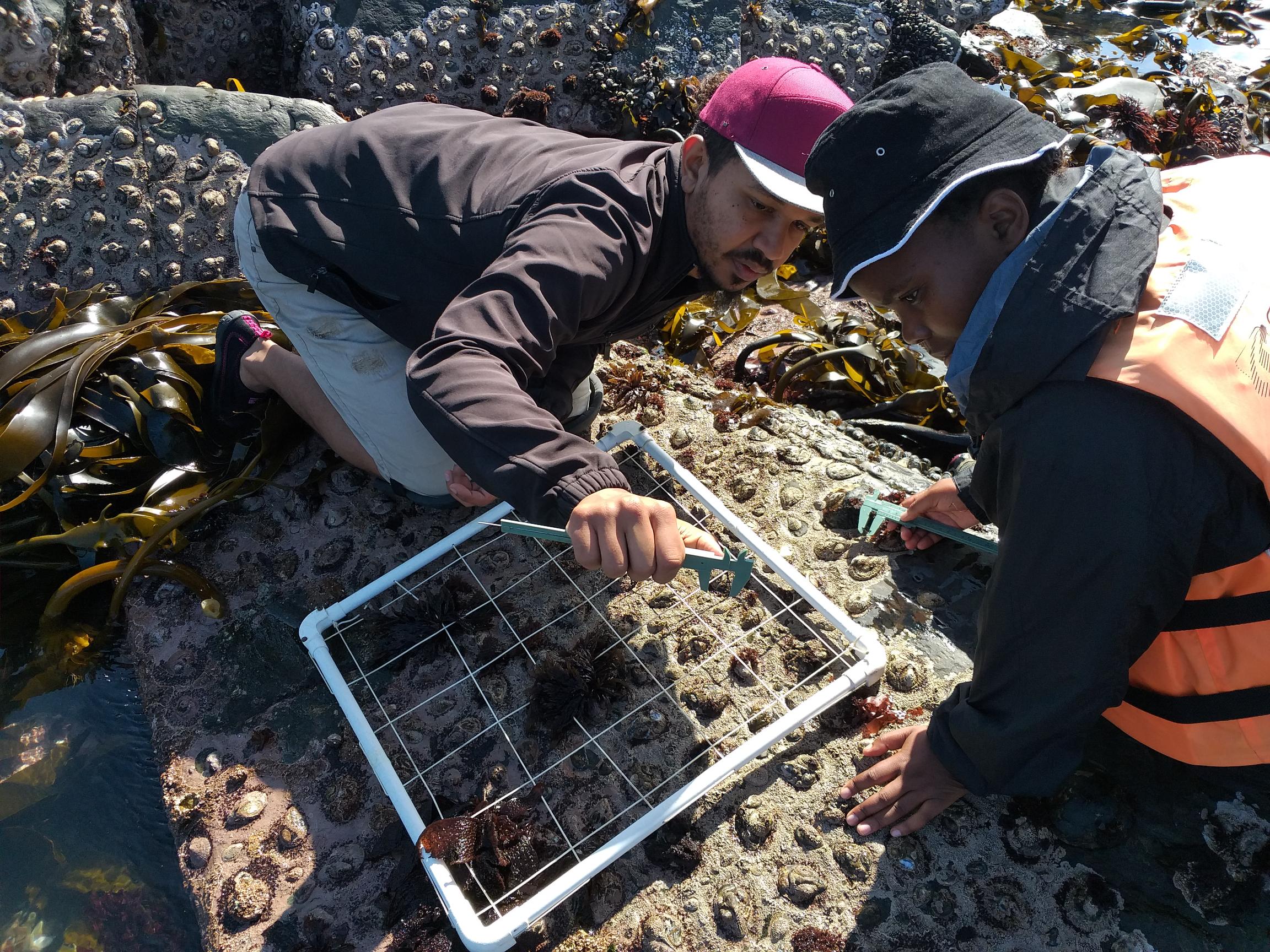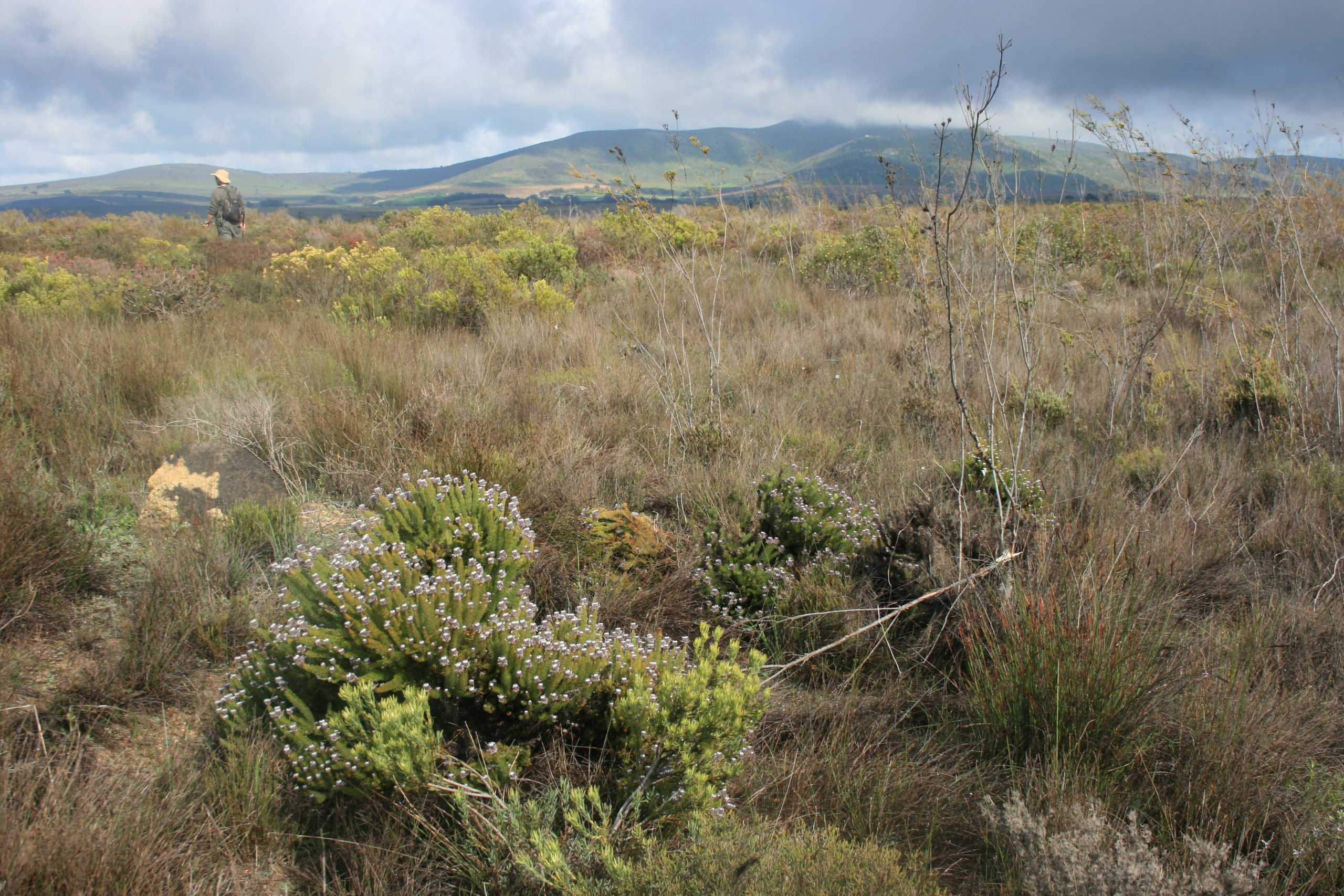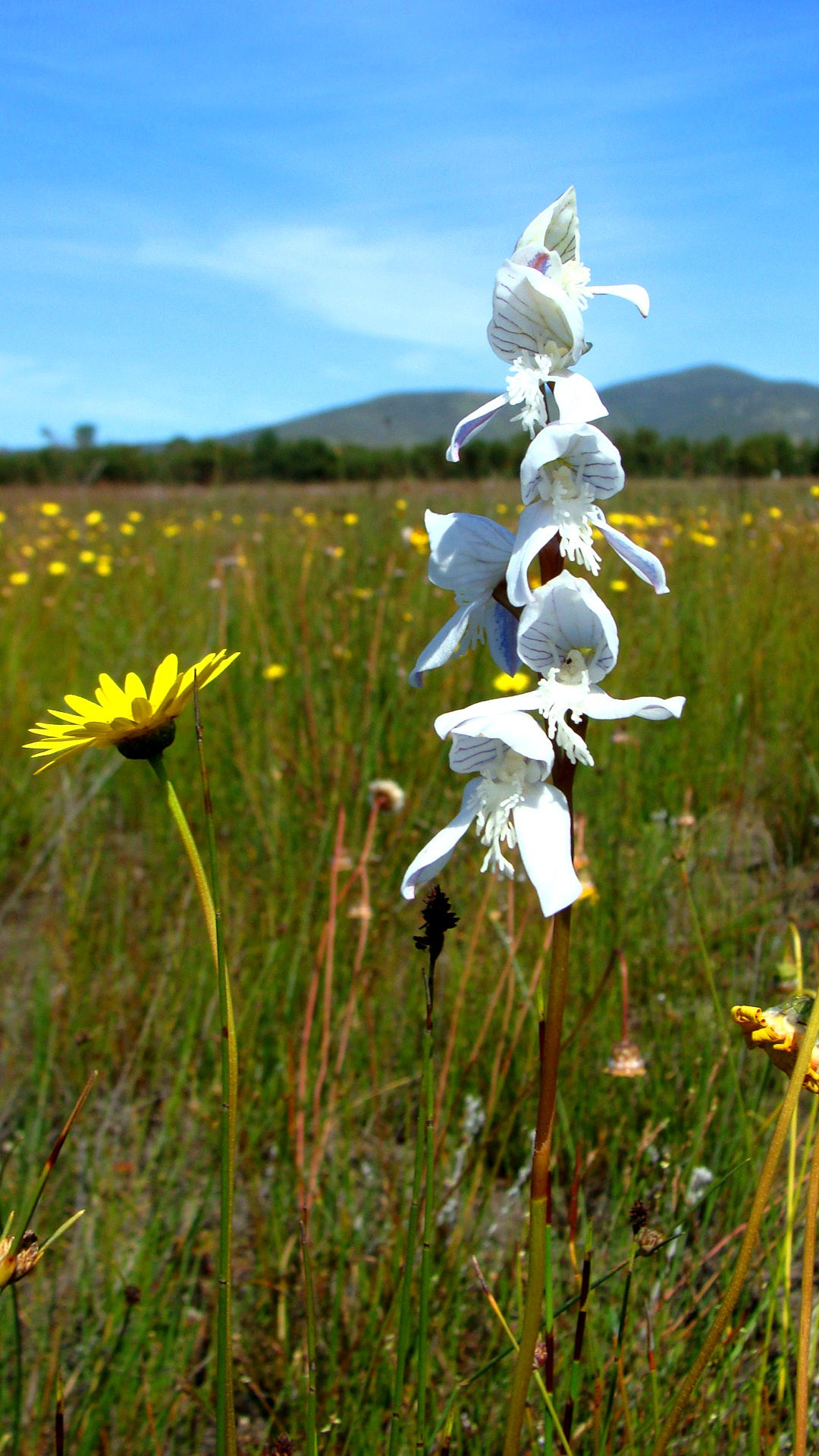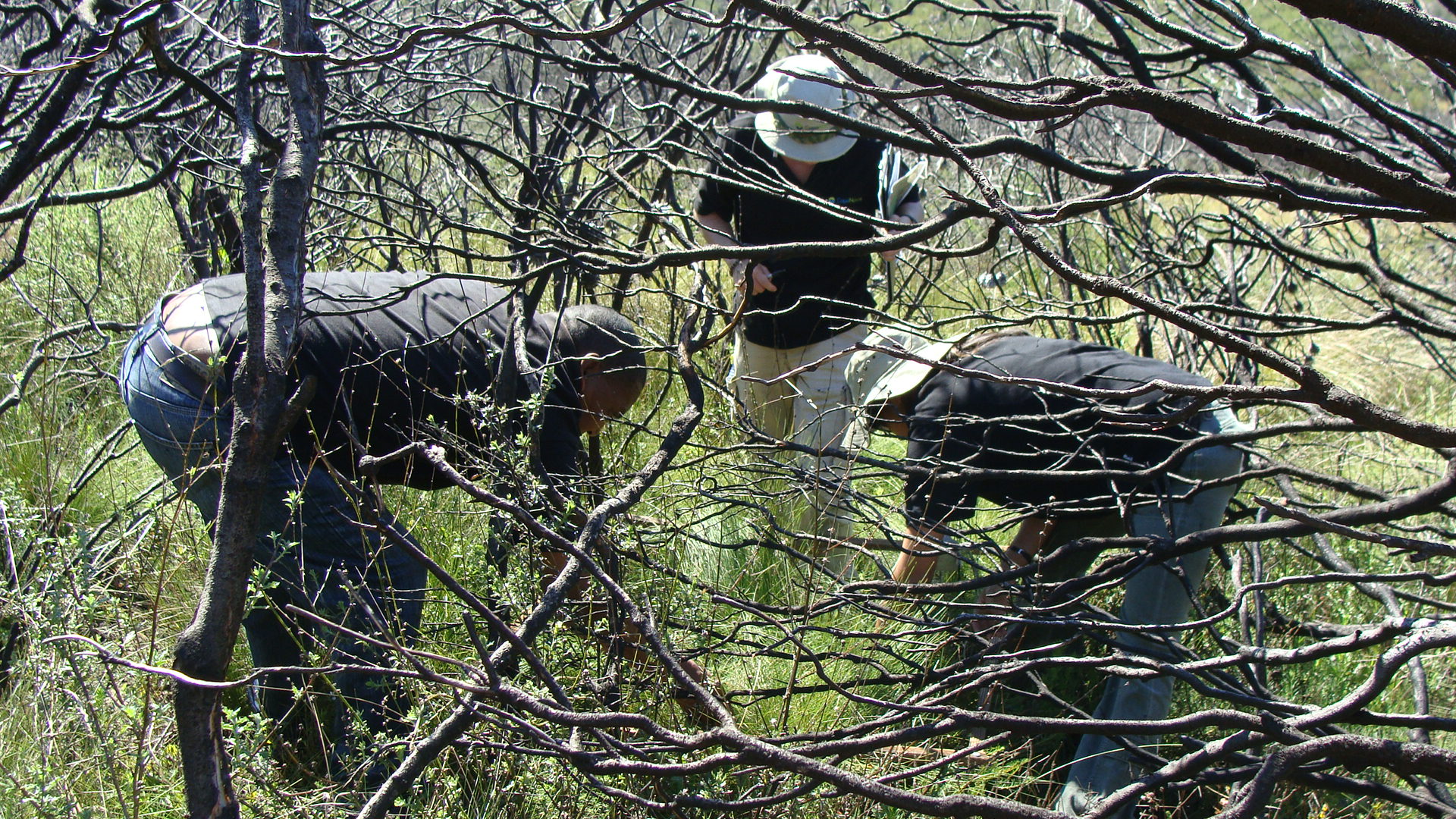
Intertidal zone monitoring in the Ganzekraal Conservation Area, South Africa.
Credit: CapeNature

Dassenberg climate corridor, South Africa, which contains highly-threatened and poorly-conserved lowland and coastal habitats.
Credit: CapeNature

critically endangered Disa barbata orchid, South Africa.
Credit: CapeNature

Credit: CapeNature
CapeNature manages a statutory nature reserve network totaling approximately 830 800 hectares in the Western Cape province of South Africa. CapeNature recently evaluated their planning frameworks and discovered a need for a better approach to measuring how well protected areas were achieving objectives and conserving values—a way to manage uncertainty with certainty and measure impact. Through the GEF-5 PA project and with the help of volunteer CCNet coaches, CapeNature piloted the Conservation Standards with the Dassenberg Coastal Catchment Partnership as a case study. The Dassenberg coastal catchment is a critical climate change corridor with multiple stakeholders and multiple conservation and local socioeconomic objectives.
The pilot was a success, and CapeNature have adopted the Conservation Standards for protected area planning and management. The application of the Conservation Standards facilitated clear articulation of values and the linkages between values, goals, strategies, and monitoring, setting managers up to measure conservation effectiveness. The Conservation Standards strengthened participatory planning with stakeholders, building stronger links between protected area values and human wellbeing. It also helps management teams design monitoring and evaluation requirements and identify measures of success at the onset of planning. As the Conservation Standards becomes more entrenched in organisational design, CapeNature envisions improved reporting capability and traceability between budget allocation and actions and between actions and the condition of values.
Through our efforts, we learned some lessons that may help others who are interested in institutionalising the Conservation Standards:
- Seek and articulate agency’s “Why?”
- Test organisational readiness and determine if the climate is suitable for testing and taking up new ideas and processes
- Have a clear vision
- Find an “on-ramp”
- Use a pilot as an opportunity to demonstrate and capacitate others
- Mandate/formalise the process as soon as there is buy-in
- Invest in people–human resources–to develop capability and expertise
- Invest in tools, software, and skills development
- Expect resistance, seek to understand it, and develop a strategy to overcome it
- Persevere!
Visit the Cape Nature website to learn more or contact Natalie Hayward with questions.
